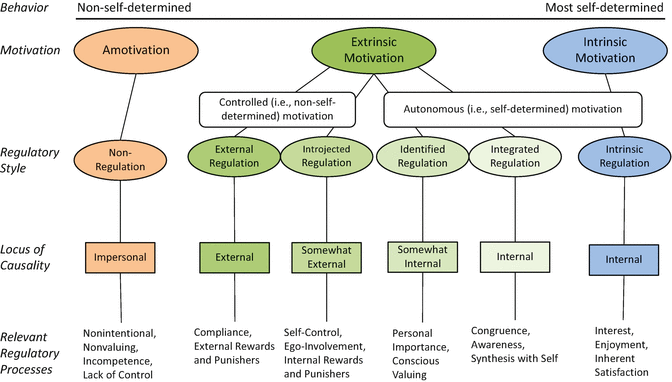psychology ATAR 12 - motivation and wellbeing
1/29
There's no tags or description
Looks like no tags are added yet.
Name | Mastery | Learn | Test | Matching | Spaced |
|---|
No study sessions yet.
30 Terms
motivation
conscious or unconscious drive leading the behaviour that individuals initiate, direct and maintain
psychological motivation
assure an efficient maintenance of the metabolic processes essential for the survival of the individual
eg: acquisition of nutrients, water or reproduction
*** hunger and thirst do not constitute physiological motivations, they are the impulse leading to maintaining the balance of milieu interior
motivated cognition
when people think and reason, they sometimes have a rested interest in the outcome of their thinking and reasoning - people are less open minded
eg: wishful thinking about sporting teams
whether someone will survive a risky surgery
sources of motivation
physiological: motivation that is necessary for survival - this motivates most human behaviour
cognitions: motivation derived from cognition - including intellectual challenges
emotional: can stem from trying to avoid pain and seeking happiness
social: the need to be with others - drives social relations with others
self actualisation
the ultimate star of being all that individuals are striving to attain
** maslow explained how people strive to reach their full potential and continually seek personal growth
levels of motivation
deficiency needs: basic needs people are motivated to fulfil due to their absence - these are important for survival and stop acting as a motivator once they have been met
eg: when you are hungry then you eat food ceases to be the motivator
growth needs: needs that once met act as the motivation for people to continue fulfilling them
** they are unique to the person and will continue to increase as each need is met
original maslows hierarchy 1954
level one: physiological needs
level two: safety needs
level three: love and belongingness needs
level four: esteem needs
level five: self actualisation
expanded hierarchy of need 1970
level eight: transcendence needs: deeper meaning of life, to help society
level seven: self actualisation - self fulfilment, self realisation
level six: aesthetic needs - beauty, delight
level five: cognition needs - knowledge, educational growth
level four: esteem needs - self respect, confidence, recognition
level three: love and belongingness needs - acceptance, family, identification
level two: safety needs - security, stability, laws
level one: physiological needs - food, water, shelter
**works in a triangle one being at the bottom eight at the tip
***1-4 is deficiency
5-8 is growth
cognition
the mental process of gaining knowledge and understanding
transcendence
the experience of going beyond limitations of physical human experience
according to the self determination theory
self determination is critical in the development and use of extrinsic and intrinsic motivation
self determination continuum

types of motivation
amotivation: the lack of any motivation
intrinsic motivation: motivation from a desire for external rewards
extrinsic motivation: motivation driven by self satisfaction arising from achieving a specific goal
psychological needs for motivation
autonomy: the need for people to feel in control of their own actions
competence: desire to feel capable of mastering new skills and experiencing achievement
relatedness: longingness to form social connections and have positive relationships with others
strengths and weaknesses for the self determination theory
strengths: widely applicable across different cultures and context as fundamental needs being universal
weakness: strong emphasis on autonomy is argued to minimise influence that external rewards have on motivation
subjective wellbeing - diener 1984
mixture of negative and positive measures and overall emotional and cognitive assessments of life
**based on personal experience of an individual
main concepts of subjective wellbeing
life satisfaction - cognitive
affective balance - emotional
life satisfaction
the overall assessment a person makes to their own life and experiences
affective balance
the experience and outward expression of emotions
**positive or negative
strengths of diener - subjective wellbeing
applicable across multiple cultures
it is a comprehensive and holistic approach to wellbeing
limitation of diener - subjective wellbeing
mainly focused on emotions and personal experience
self report measures act on the basis of the model to specifically assess explicit attitudes
6 factor model of psychological wellbeing - ryff 1989
autonomy
environmental mastery
personal growth
positive relations with others
purpose in life
self acceptance
autonomy
the individuals seeking personal evaluation not from other but from within themselves using their own standards
environmental mastery
rather than accepting things for how they are especially when they are not desirable
involves manipulating the surroundings to best suit personal needs
personal growth
utilising past and present experience allows one to continually develop as a person
positive relations with others
indivualds who self actualise find importance in forming genuine relationships with other people and also guiding the younger generation
purpose in life
meaning in life evolves over time and requires the individual to continually re-evaluate its intentionality and direction
self acceptance
an individuals acknowledgement of their personal strengths, weaknesses and past decisions and behaviours
strengths of psychological wellbeing - ryff 1989
encompasses multiple dimensions of wellbeing including self acceptance and capacity for personal growth
has been found to be very reliable and valid - a credible tool
limitation of psychological wellbeing - ryff 1989
additional factors that influence wellbeing are not accounted for in the model